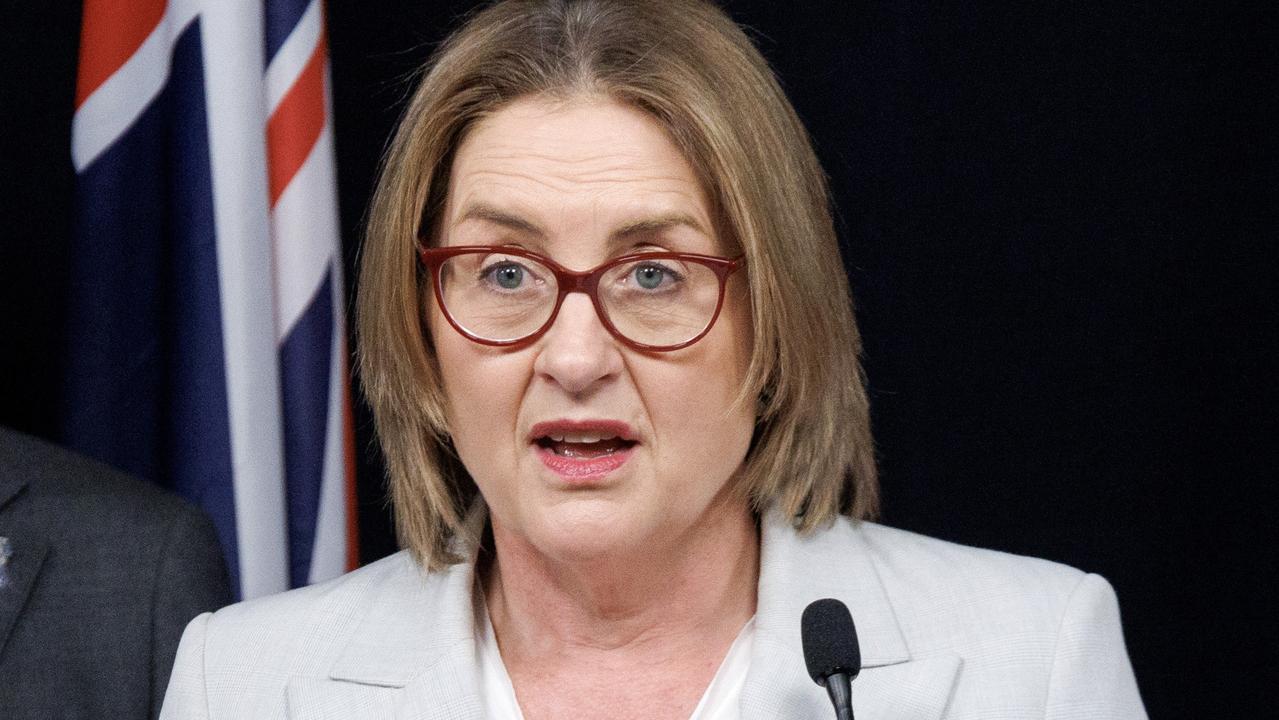City of Melbourne presses pause on bike lanes planned for Flinders St, Bourke St and Spring St
The City of Melbourne is pressing pause on its plans to roll out protected bike lanes along Flinders, Bourke and Spring streets, saying the works would be “too disruptive” at this point in time.
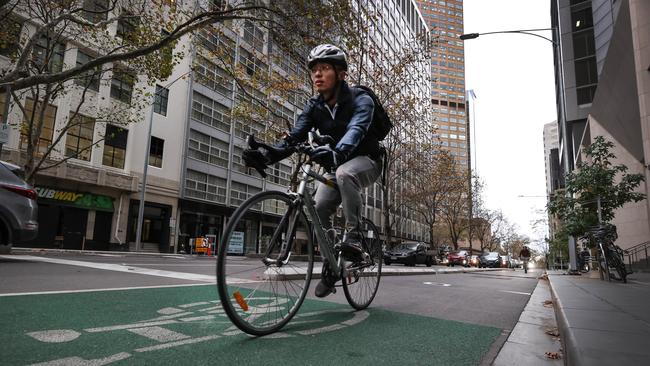
Victoria
Don't miss out on the headlines from Victoria. Followed categories will be added to My News.
The City of Melbourne has hit the brakes on its plan to roll out new bike lanes along three CBD thoroughfares, while it is forced to replace the “deteriorating” cycling infrastructure it installed only three years ago.
Protected bike lanes, which separate cyclists from motorists with a physical barrier, were expected to be installed along Flinders St, Bourke St and Spring St this year.
But a report to the Future Melbourne committee, which endorsed an updated plan on Tuesday night, said these projects have been paused and moved to “future years”.
“To proceed with these works would have been too disruptive to the transport network given the number of major state projects currently underway in the Hoddle Grid,” the report reads.
The 4km of protected bike lanes proposed for Flinders St would run from Docklands to Spring St, while the bike lanes on Bourke St and Spring St would connect existing routes on Albert St and Exhibition St.
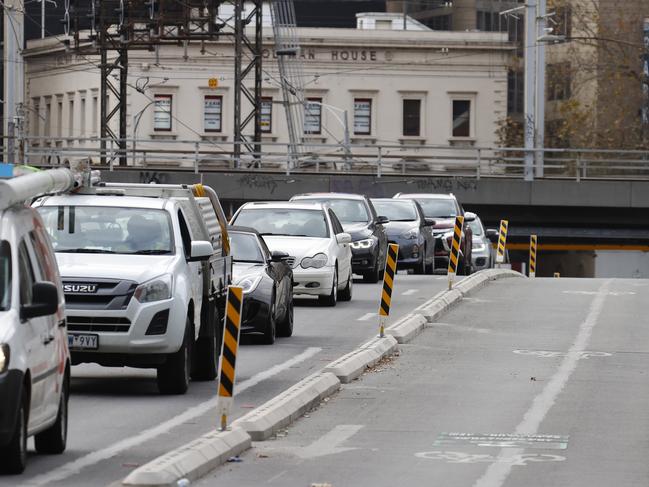
The City of Melbourne is expected though to complete its rollout of protected bike lanes along Grattan St, Arden St, Royal Parade, Abbotsford St and Exhibition St this year.
Outgoing Lord Mayor Sally Capp said “more people than ever” are using bikes and e-scooters to move around the city.
“To accommodate these new road users, we’re continuing to deliver high-quality riding lanes in the right locations,” she said.
“We know our community is already experiencing disruptions through city-shaping transport projects such as the Metro Tunnel, so we’re strategically scheduling our works to keep the city moving.”
While the Bourke St and Spring St projects have been paused indefinitely, the Herald Sun understands the Flinders St bike lanes will be rolled out in 2025-26, due to the state government’s decision to extend the Flinders St road closure until mid-2024.
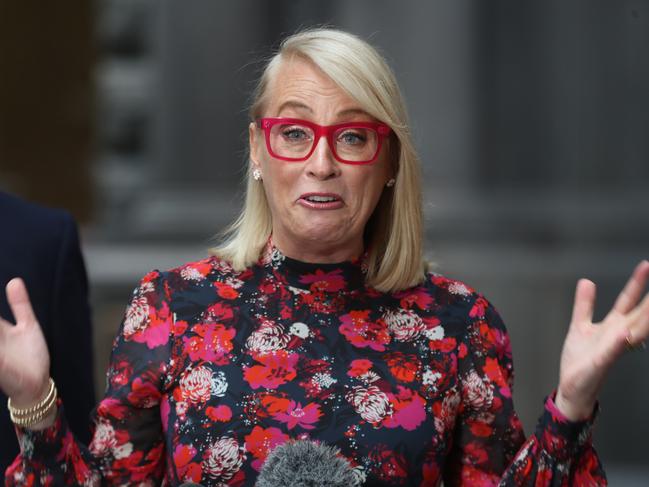
But according to the report, the City of Melbourne will need to focus for the next two years on upgrading sections of bike lanes along Exhibition St, William St, Queens Bridge St and Whiteman St by switching from “adjustable to more durable kerb materials”.
“Many of the new bike lanes delivered since June 2020 have been constructed using adjustable materials which have worked well in most locations, however they are more likely to be damaged than more durable infrastructure,” the report reads.
“In some locations, this results in ongoing maintenance costs, safety hazards and a poor streetscape and amenity outcome.”
In 2020, the City of Melbourne endorsed a target for accelerated delivery of 44km of protected bike lanes, with the use of adjustable kerb materials – such as lightweight bike lane separators – supported by the state government during the pandemic.
However, the Department of Transport and Planning has since advised the City of Melbourne that the use of adjustable and temporary infrastructure is “no longer supported for this purpose”.
“It is intended that the (updated plan) will reduce the use of adjustable materials where possible and seek to use more durable materials as part of project delivery,” the report continues.
Ten councillors at Town Hall on Tuesday night voted at a Future Melbourne committee meeting to endorse the updated plan, which indicates when some of the protected bike lanes are expected to either be installed or upgraded.
Deputy Lord Mayor Nicholas Reece told fellow councillors he believed the City of Melbourne was “wrong” to rely on adjustable kerb materials during the pandemic.
“Since they were installed, they have deteriorated, crumbled, become dangerous and I think contributed towards a loss of confidence in the bike lane projects,” he said.
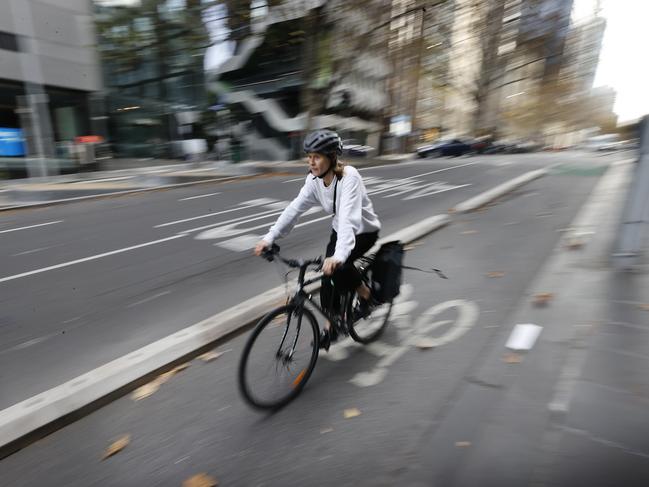
The Sunday Herald Sun in December revealed that some of the infrastructure was crumbling three years after being installed.
Council Watch president Dean Hurlston said at the time that the City of Melbourne’s inability to deliver quality infrastructure projects was worrying and costly for local ratepayers.
Mr Hurlston said it needed to be transparent with the community about how much it was going to cost to fix the cycling infrastructure.
“Ratepayers deserve to know how much of their money is being wasted by the City of Melbourne because they couldn’t get it done properly the first time,” he said.
A City of Melbourne spokeswoman in December said some of the cycling infrastructure has “deteriorated after repeated impacts by vehicles”.
“The council is investigating the viability of alternative materials which can better withstand vehicle impacts,” she said.
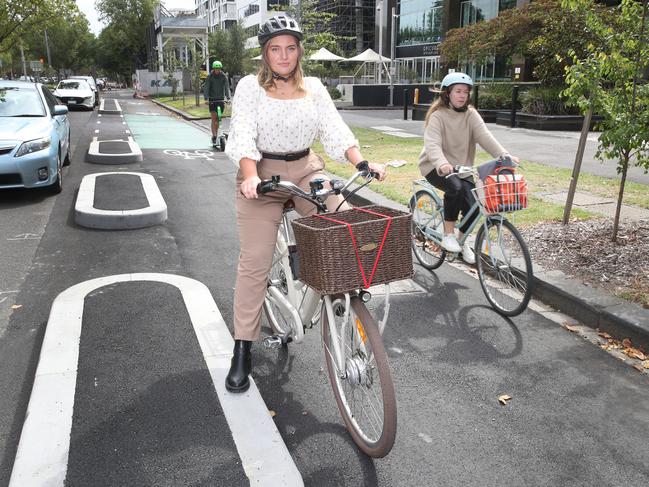
According to the report, 27.4km of new bike lanes have been delivered as of March this year, including 18.7km delivered under the accelerated delivery program.
Another 6.6km of new bike lanes have also been delivered within City of Melbourne by the state government since June 2020.
Bicycle Network chief executive Alison McCormack on Monday said the City of Melbourne must “keep on course with its transport strategy”.
“With the recent opening of the St Kilda Road bike infrastructure, with the Veloway from the west next year and with massive changes in rail capacity with the opening of Metro Tunnel, central Melbourne needs to become much more accessible to active and public transport users,” she said in an article on the Bicycle Network website.
“Bike lanes have been proved to reduce congestion, reduce the risk of crashes and make our streets more appealing places to visit, meet and shop.
“Melbourne is transforming into a thriving hive of social activity and commerce and we have to keep making it easier for people to get here and enjoy themselves.”
According to research, the crash rate has gone down by 46 per cent for cyclists using the new protected bike lanes.
In April last year, the Victorian Transport Association flagged that the installation of new protected bike lanes could lead to road congestion and safety risks, due to the reduction in traffic lanes and the removal of parking spaces.




